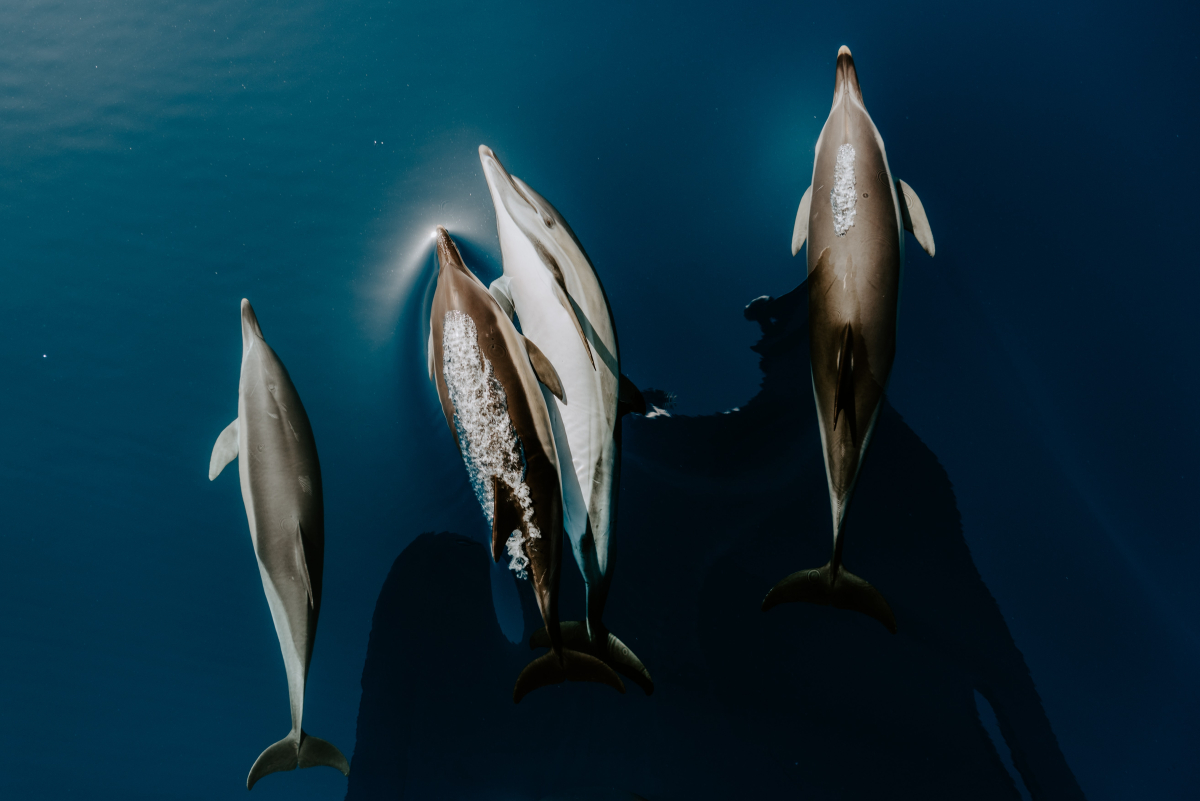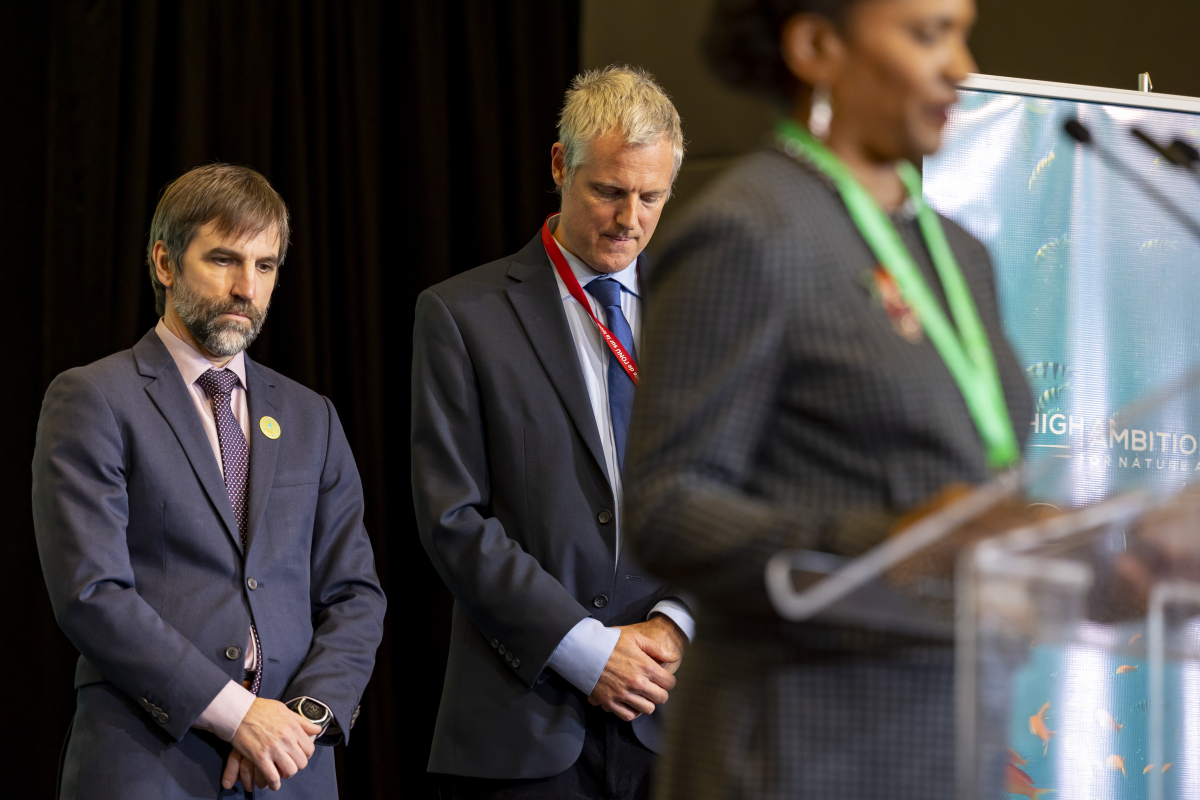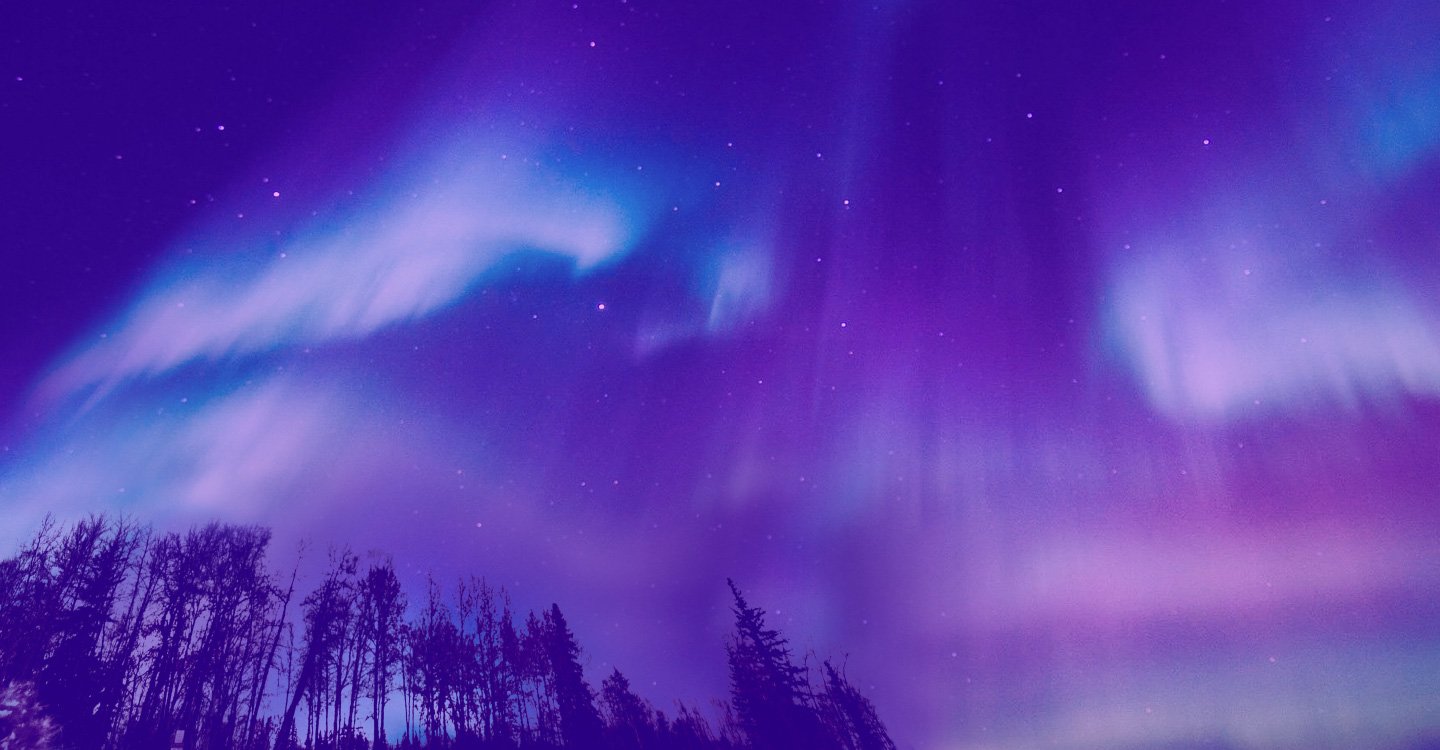
Food for thought
Next time you stroll through your local produce section, it’s worth remembering how that food made it on the shelf.
“Without biodiversity, there would be no food at the grocery store,” explains food security reporter Marc Fawcett-Atkinson. “Pretty much all fruits and vegetables — tomatoes, berries, stone fruit, apples, almonds, and others — would see drastic declines in yield” without pollinators like bees and butterflies to help them grow.
In fact, biodiversity — the variety of plants, animals, fungi and bacteria on Earth — is “at the root of agriculture,” Marc says.
“All our domesticated plant and animal species arose from people over generations gathering wild organisms and breeding them for desired traits,” he explains. “This broad genetic pool was — and remains — crucial to develop varieties that can meet specific demands like flavour, pest resistance or resilience in the face of climate change.”
But around 50 or so years ago, we started adopting the conventional farming practices that are so common now: things like single-crop fields, artificial fertilizers and pesticides to kill bugs.
“The result has been farming systems that are more susceptible to climate change and disease, less healthy for ecosystems and have drastically reduced the diversity in our diets.”
But it’s not too late to change. Even just adding wetlands or hedgerows to a conventional farm could help boost its biodiversity by providing important habitat, Marc tells me, and organic farming makes a big difference. “However, all this costs money — particularly during the transition — so farmers need supports to help them make the jump financially.”

What we stand to lose
The ocean may mean different things to different people in Atlantic Canada, but “it's undeniably a source of pride, income and culture,” says East Coast reporter Cloe Logan.
To Mi’gmaq communities in New Brunswick, for example, Atlantic salmon are valuable for food, social and ceremonial needs. To fishers, Indigenous and non-Indigenous, the ocean is part of their livelihood: the industry contributes more than $2 billion to the region’s economy and supports almost 25,300 jobs, according to the federal government.
“The Atlantic Ocean is woven into so many aspects of identity out here, and you see that reflected in what people eat, sing and create,” Cloe says.
But as Canada pushes to develop so-called “cleaner” oil and gas, provinces in the Maritimes are planning to go big on offshore drilling — a move that “means more stress on an environment that has already suffered due to human-caused climate change,” Cloe explains.
“The ocean plays a tremendous role in absorbing carbon,” she says. “Each year, it absorbs around 30 per cent of human-made CO2” — pollution that comes from heating buildings with fossil fuels, driving gas-powered cars and heavy industry like concrete and steel-making plants — “essentially saving it from warming the atmosphere. It's partly why we've seen coral reefs dying out and populations of some species dwindling.”
Offshore drilling could threaten marine life before anyone even sets up an oil rig. Exploring for fossil fuel deposits under the ocean floor means blasting noisy airguns that can harm everything from dolphins and whales to fish, not to mention a major building block of ocean ecosystems: “The blasts have been known to kill zooplankton — a vital part of the marine food chain — at distances of up to 1.2 kilometres away,” Cloe says.
Never mind the threat of oil spills, which can be catastrophic to the surrounding environment. These disasters can happen even when companies are just exploring, but once a rig starts pumping oil, the risk goes up. A potential spill at Bay du Nord — Canada’s first-ever deepwater oil project, planned for a spot 500 kilometres off the coast of Newfoundland and Labrador — could take up to 36 days to stop. Equinor, the company behind the project, estimates the chance of an oil spill at 16 per cent over the project’s 30-year lifespan, Cloe says.
“Ultimately, more offshore activity means less biodiversity” — and puts the ocean so many Atlantic Canadians rely on in jeopardy.

Where Indigenous rights and biodiversity meet
While Canada — like many countries — struggles to balance what we take from our environment with what we do to nourish it, Indigenous Peoples around the world have a long track record of protecting nature: 80 per cent of the world’s remaining biodiversity is on Indigenous lands. In Canada, the federal government has partnered with First Nations to fund Indigenous-led conservation programs.
When it comes to protecting nature, “‘moccasins on the ground’ is the common phrase I hear around Indigenous nations,” says reporter Matteo Cimellaro, who covers urban Indigenous communities in and around Ottawa. “These programs employ citizens of First Nations to monitor and steward the land. Water sampling, endangered species monitoring and a rekindling of ancestral knowledge are just some of the important work these guardians do.”
These efforts are vital to safeguarding ecosystems, but the question of who gets to make decisions about the land is an ongoing issue. This is where conference room negotiations and the real world meet: without a say in the decision-making that shapes our biodiversity plans, the ability of Indigenous nations to steward their traditional territories — not just in Canada but around the world — is at the mercy of other governments.
At COP15, there are Indigenous members of Canada’s delegation, Matteo says, and even the environment minister seems to grasp the importance of including Indigenous Peoples in the biodiversity conversation. But in other parts of the world, Indigenous nations have a different relationship with state governments.
“There’s a large gap between how Canada and other western countries view conservation,” Matteo says. “I’ve been speaking with Indigenous leaders from Latin America, and those conversations have dug up different perspectives on what conservation is, defined in an Indigenous context. They don’t want state-sanctioned conservation on their ancestral territories because it risks the state setting guidelines, rules and ultimately control of how lands are managed.
“In Canada, we forget how far we’ve come in reconciliation, and some of that naivete could blind us to how vulnerable some global Indigenous communities are if state-conservation becomes the primary way their territories are conserved.”

Protecting the ‘library of life’
Humans have moved our way into pretty much every ecosystem on Earth, shaping our surroundings to accommodate our lives — sometimes at the expense of other nearby living things. But for one conservationist in B.C., protecting nature meant leaving it alone, and so the late Betty Swift and her family chose to gift a private island off the West Coast to the Islands Trust Conservancy, creating a haven for some of the area’s rarest species and ecosystems.
West Coast reporter Rochelle Baker calls the new Link Island Nature Reserve “a biodiversity gem” for several reasons. “It’s an undeveloped, semi-isolated island that acts as an oasis to endangered species and habitats inside B.C.’s smallest and rarest ecological areas, the Coastal Douglas-fir Biogeoclimatic Zone.”
Protecting biodiversity in the province matters, she says, because “its ‘library of life’ is the best in Canada.” B.C. has the most species and ecosystems at risk anywhere in the country — more than 1,800 in decline. To put it simply: “Protecting Canada’s biodiversity can’t be done without making gains in B.C.”
Thankfully, there are several success stories in the province, too, Rochelle says. The Great Bear Rainforest, for example, is a “really excellent example of Indigenous-led conservation in B.C.” and “provides a blueprint to this day for ‘good conservation’” thanks to its collaboration between First Nations and the provincial and federal governments.
But you don’t have to trek into the depths of a forest to protect nature. “We often think of B.C.’s biodiverse areas as … remote wilderness areas in the furthest reaches of the province,” Rochelle says. “But many of B.C.’s biodiversity hot spots are located in the heavily populated areas in the southwest corner of the province and on Vancouver Island. There’s a lot of competition in these areas from industry and development.”
Since most of the land in these areas is privately owned, “landowners can make huge contributions to protecting biodiversity,” she adds. “That might involve stewarding their land to protect or plant native vegetation and trees, stay on top of invasive species and minimize alterations to the land” — things like creating lawns, draining wetlands or putting up concrete on shorelines.
A salute to Salmon People

Every year, the team at Apple Podcasts publishes millions of podcasts but selects only a few to feature as the best of the year. The Salmon People by Sandra Bartlett, Canada’s National Observer’s managing producer of podcasts, was named one of the top 12 podcasts of 2022 by the Apple team. Listen to the full season on Apple Podcasts, or wherever you listen to your favourite podcasts, and consider joining our end-of-year fundraising campaign so we can continue to make more podcasts like this one in the future.
More CNO reads

Lobbyists and billionaires turned up to this year’s biodiversity conference — and it didn’t over well. Groups representing oil majors, mining giants, banks and industrial farming were walking the halls of COP15. Here’s why one researcher says powerful people and companies are turning their attention from climate change to biodiversity, Natasha Bulowski and John Woodside report.
Wake up, Alberta. The energy transition is moving fast — and the province is not in the driver’s seat, writes columnist Max Fawcett. Time to accept the world is breaking up with fossil fuels.
“The entire world is watching.” Environment Minister Steven Guilbeault and several of his colleagues from other countries urged negotiators to embrace a pledge to protect 30 per cent of the planet by 2030 as the United Nations biodiversity conference reaches its end, John Woodside reports.
Parks won’t solve the biodiversity crisis. COP15’s main pledge effectively proposes creating more parks, writes lawyer and Sierra Club director Owen Leggatt Stewart. By championing this cause, Canada is ignoring a homegrown tool available for the protection of biodiversity — Aboriginal rights.
The Amazon is in a “deep crisis.” Canada could help. By creating stronger mining rules, Indigenous nations in the region say Canada could shift the whole industry’s approach to Indigenous rights and environmental protections, Matteo Cimellaro reports.
Keep it up, Poilievre, and you’ll deliver Trudeau a fourth term. A Toronto-area byelection proves the Conservative leader’s message isn’t resonating with the suburban Ontario voters he needs to attract, writes columnist Max Fawcett.
Canada teams up with other countries to avoid relying on “authoritarian states” for critical minerals. Lithium, nickel, copper and cobalt are essential for creating clean technologies like electric vehicle batteries, solar panels and wind farms, John Woodside reports.

If you’d like to help Canada’s National Observer go further with our climate reporting, please donate to our fundraising campaign. We need to raise $100,000 by Dec. 31. We’re almost there but need you to take us to the finish line. Donate today.


